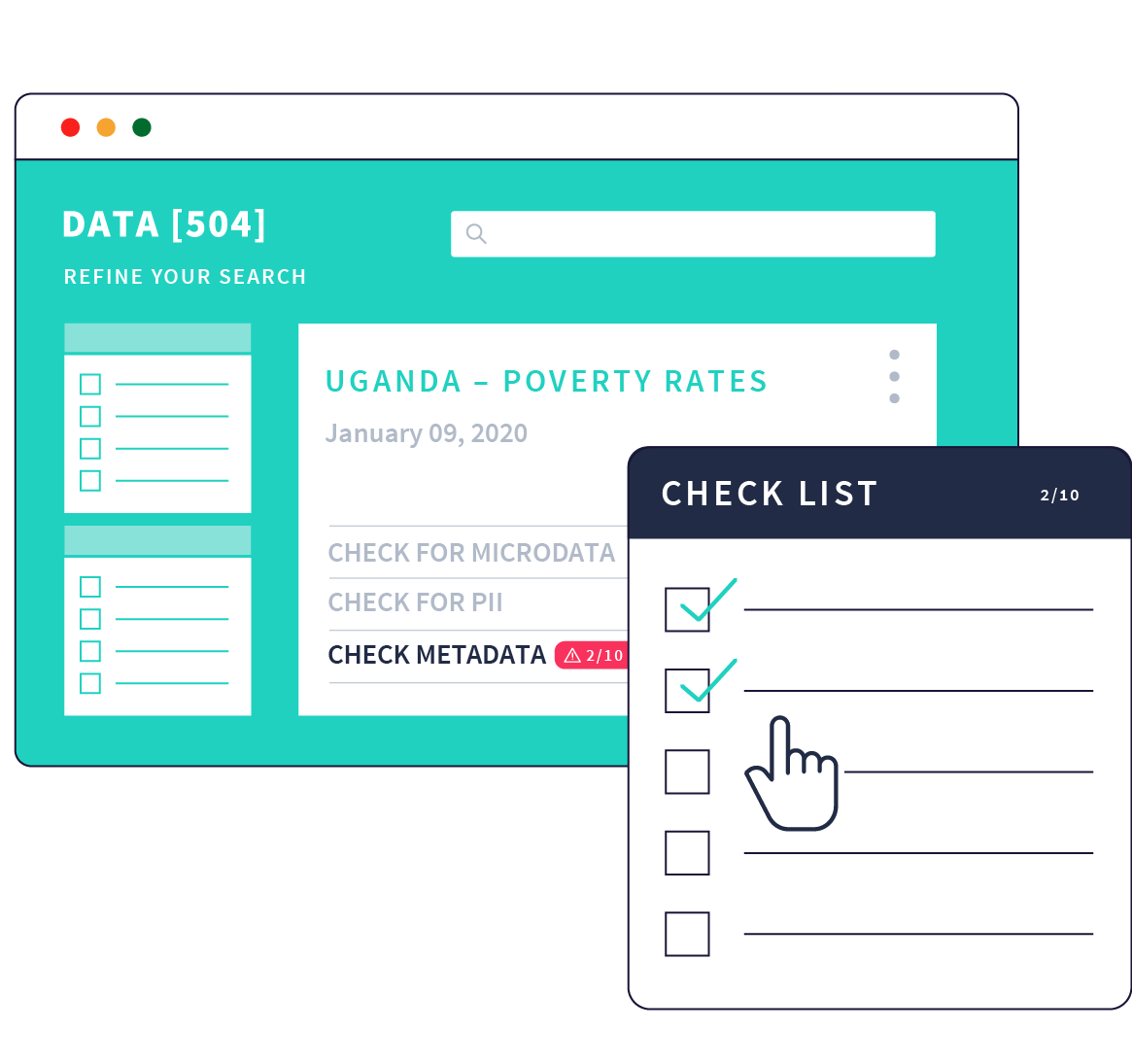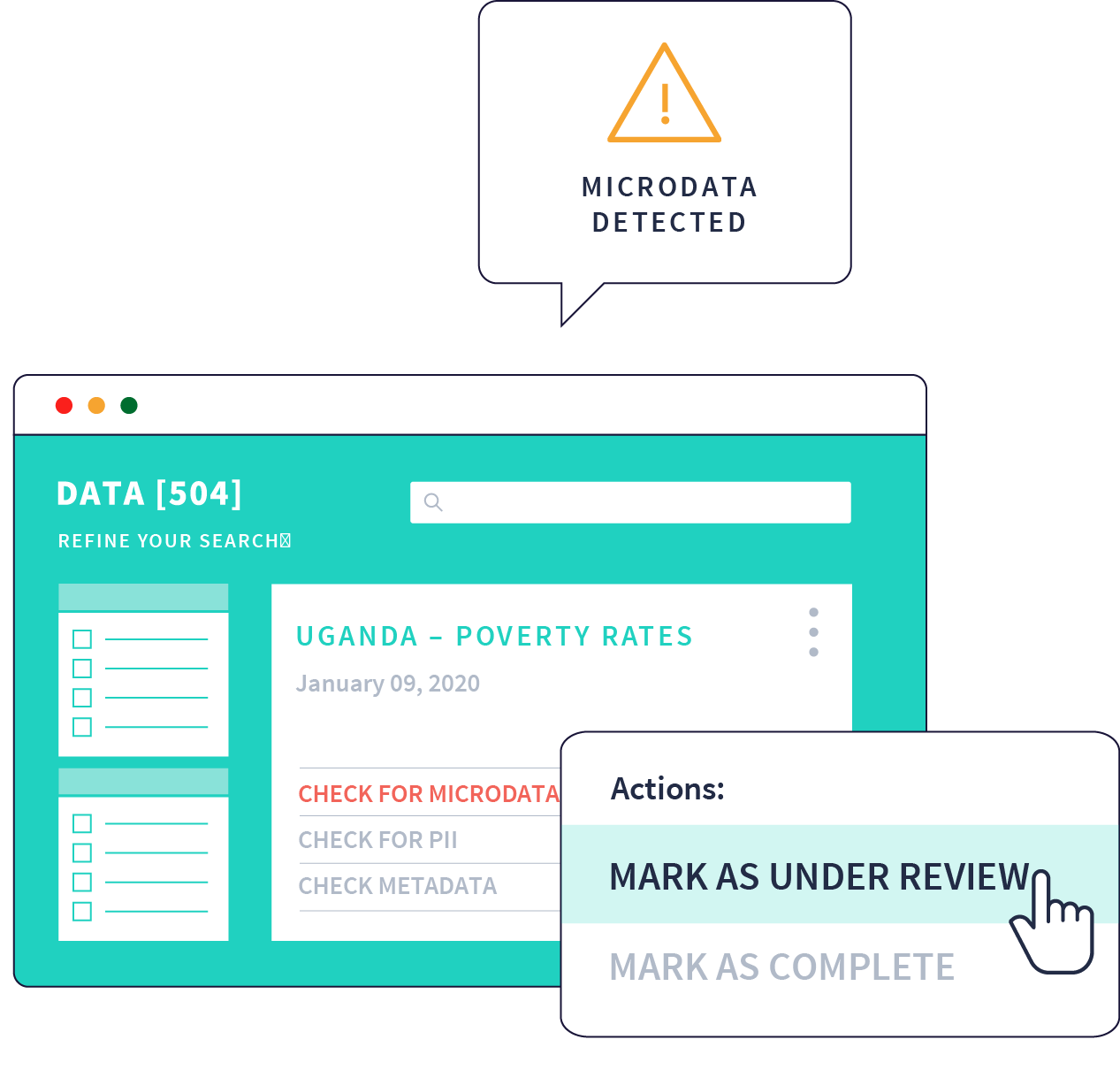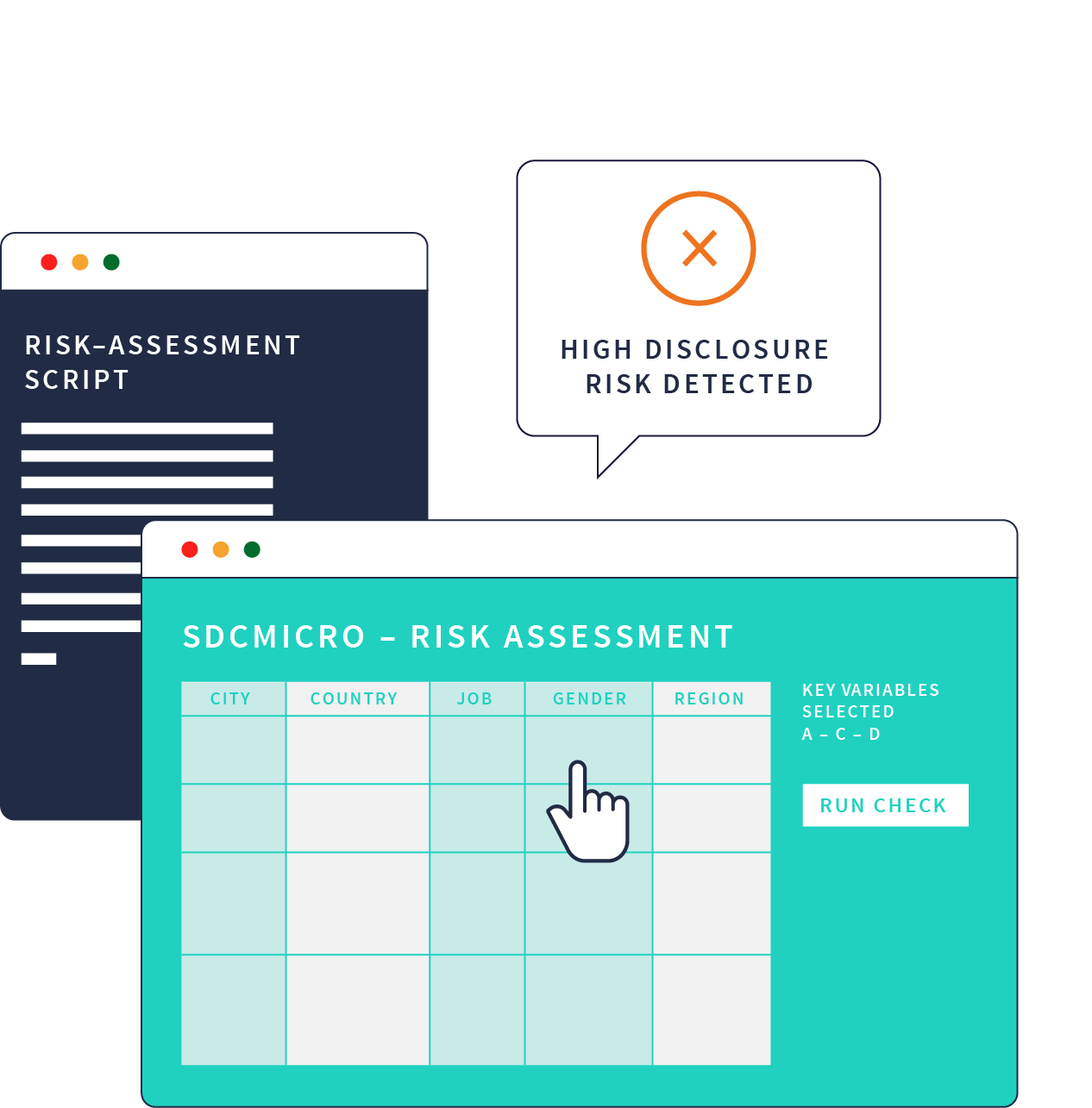Responsible Data Sharing on HDX
Our Quality Assurance Process
The HDX team manually reviews every dataset uploaded to the platform to support responsible data exchange.
We offer tools and services throughout the data sharing process:
BEFORE
We have developed tools to help you improve both the quality and usability of your data.
Use the HXL TAG ASSIST to standardize
your data and learn more about applying Statistical Disclosure Control to microdata in this GUIDANCE
NOTE.
DURING
We check every resource against a set of criteria as part of our standard Quality Assurance (QA) process.
If your dataset contains microdata, it will be placed UNDER REVIEW so that we can assess the
disclosure risk before it is shared publicly.
AFTER
We will contact the contributor if any issues are found during the QA process. For datasets that cannot
be shared publicly, we allow you to publish your metadata without uploading the resource(s) so that users
can request the data via HDX CONNECT.
How the QA Process works
When a new resource is shared on HDX...

1. We review your data against our standard quality criteria.
The HDX team is notified that a new resource has been uploaded, which kickstarts the quality
assurance process. We review all data against a set of quality criteria including the
completeness of metadata, the relevance of the data to humanitarian action, and the integrity
of the data resource(s).

2. We place all datasets containing microdata and/or other potentially sensitive information under review.
All datasets containing microdata and/or seeming to contain sensitive information are placed under review.
Microdata can be shared on HDX. However, before making these datasets available publicly, our team runs a
disclosure risk assessment to protect individuals and vulnerable groups. While a dataset is under review,
users will only be able to consult metadata or request the dataset directly from the data contributor.
The dataset will remain under review until we are able to determine that the risk of re-identification is
below our risk threshold and that any sensitive data has been removed from the dataset.

3. We run a disclosure risk assessment and work with you to determine whether and how to share your data.
We conduct the disclosure risk assessment in our secure environment using a free and open source tool
called sdcMicro. If we determine that the risk of disclosure is below our 3% threshold and no
individual respondents are found to have a high risk of re- identification, the dataset is considered safe
to be publicly shared. If the dataset has a risk of re-identification above our threshold, we notify the
data contributor and provide support to ensure that they are able to safely share the data. We may advise
the contributor to reduce the risk of disclosure by applying Statistical Disclosure Control or,
alternatively, to make the dataset available on request - through HDX connect.

We notify the contributor
via HDX and email if any
issues are found during
the QA process.
via HDX and email if any
issues are found during
the QA process.

Full documentation
of our process:
of our process:
An overview of the quality criteria reviewed by the HDX team during the QA process.
An overview of why and how the HDX team applies Statistical Disclosure Control to all microdata
uploaded on the platform.
Want to learn more?
Learn more about how to safely share microdata through
the Centre’s
Disclosure Risk Assessment Learning Path.

